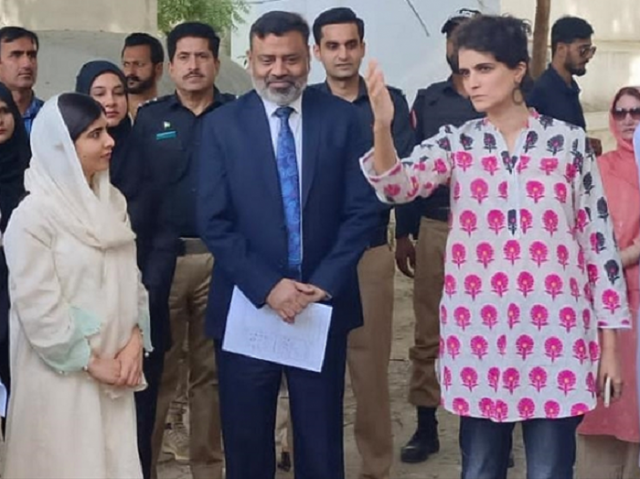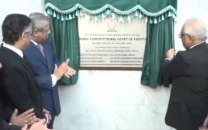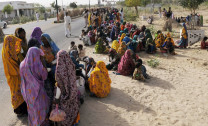Nobel laureate Malala Yousafzai visits school in Karachi
Yousafzai is visiting Pakistan to assess the current situation in flood-hit parts of the country

Nobel laureate Malala Yousafzai visited a school in Karachi on Tuesday, stressing the need for improvement in the quality of education, particularly for girls.
Yousafzai, who is also the “UN Messenger of Peace” with a special focus on girls’ education, is visiting Pakistan to assess the current situation in different parts of the country that has been battered by recent devastating rains and floods.
On the first leg of her visit, she visited an elementary school in the Central District of Karachi and remained there for an hour.
She will visit the flood-wrecked Dadu district of Sindh and meet the victims on Wednesday.
Her visit, according to Yousafzai’s non-profit organisation, Malala Fund, “aims to help keep international attention focused on the impact of floods in Pakistan and reinforce the need for critical humanitarian aid.”
She arrived in Karachi early Tuesday morning, accompanied by her parents, amid tight security.
She is visiting her home country after four years, and a second time after she survived a terrorist attack in 2012 in Swat valley by the Tehreek-e-Taliban Pakistan (TTP), a conglomerate of different militant groups.
The last time, she briefly visited her hometown Swat in March 2018.
Yousafzai, now 25, was attacked by TTP militants for her role in advocating for girls' education in the region, which faced militancy and a restriction on women's education over a decade ago.
In Dec 2014, she shared the Nobel Peace Prize with Indian child rights activist Kailash Sathyarthi, making her the youngest-ever laureate.
Flood-related losses and damages
A combination of torrential rains – 10 times heavier than usual – and apocalyptic floods have killed nearly 1,700 people across Pakistan since mid-June, aside from inundating a third of the country.
The colossal devastation will also cost $30 billion to fix, according to government estimates.
The drenching monsoon, combined with massive floods, has damaged approximately 45% of the country's cropland, posing a serious threat to food security.
Monsoon spells often cause devastation across South Asia region, but climate change and global warming have increased their ferocity and unpredictability in recent years.



















COMMENTS
Comments are moderated and generally will be posted if they are on-topic and not abusive.
For more information, please see our Comments FAQ